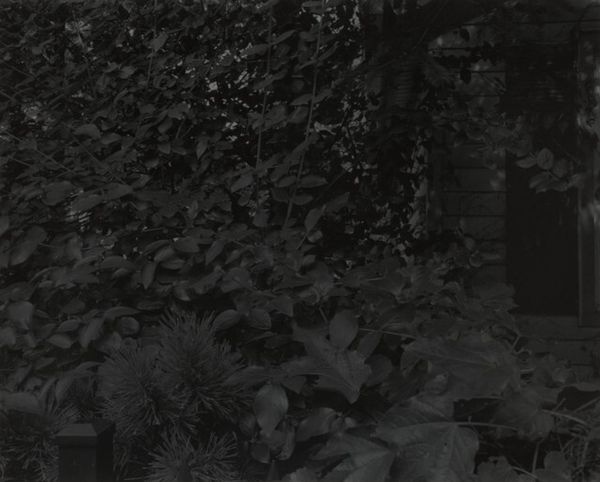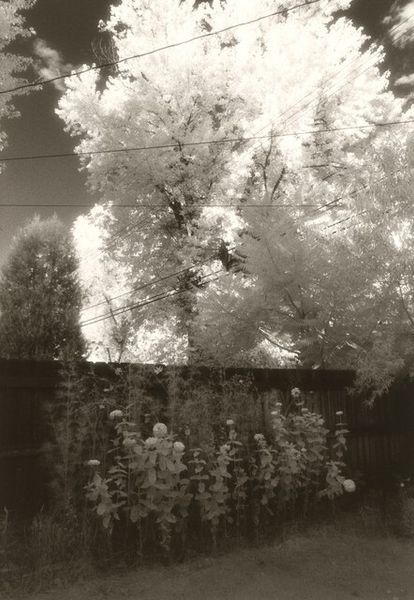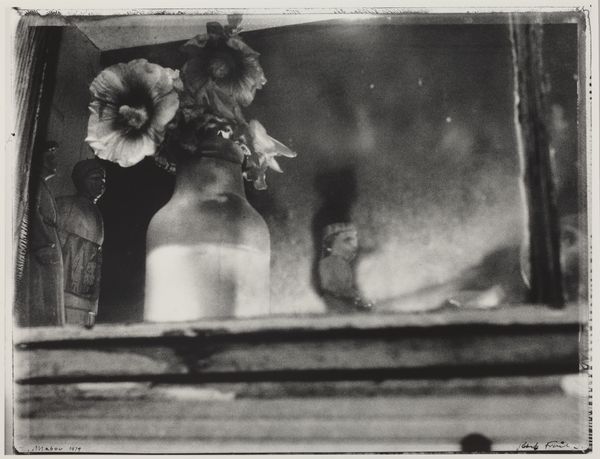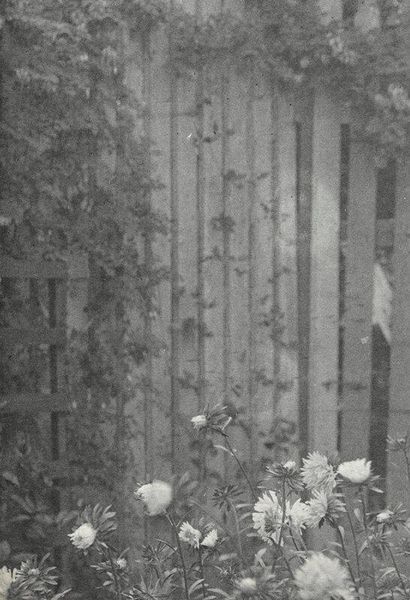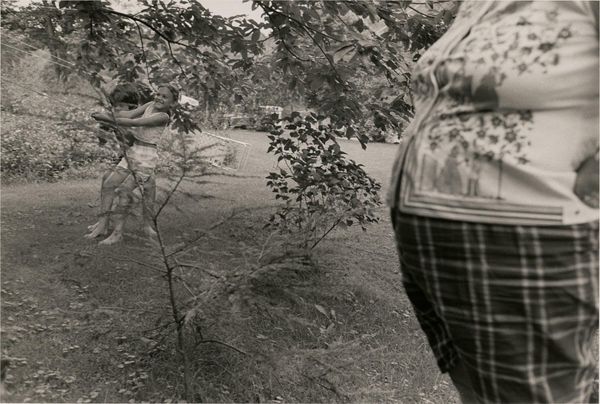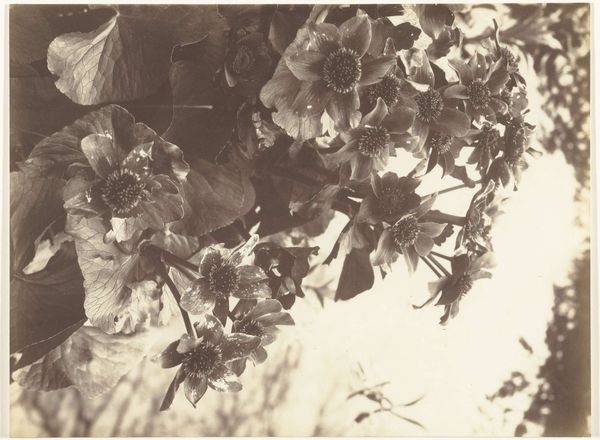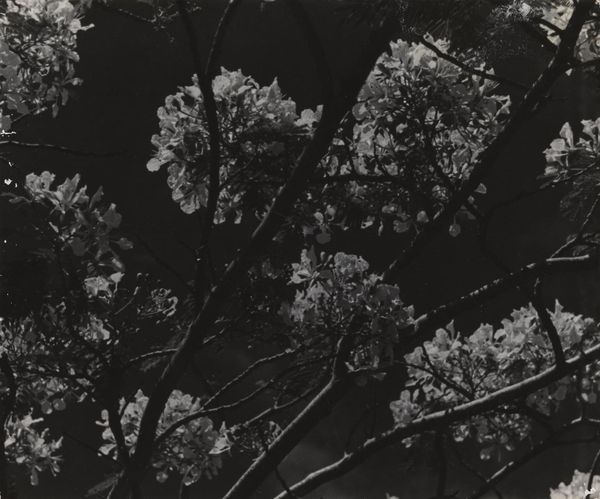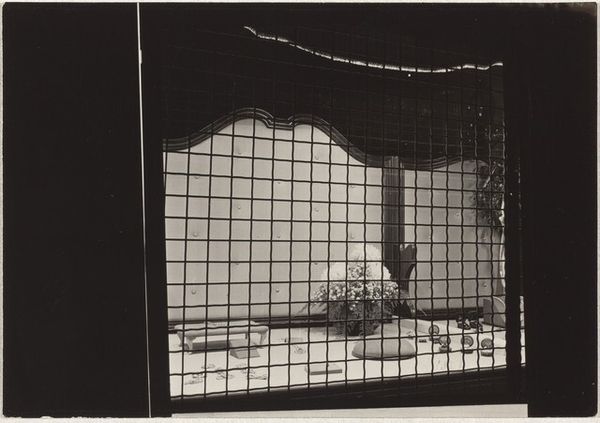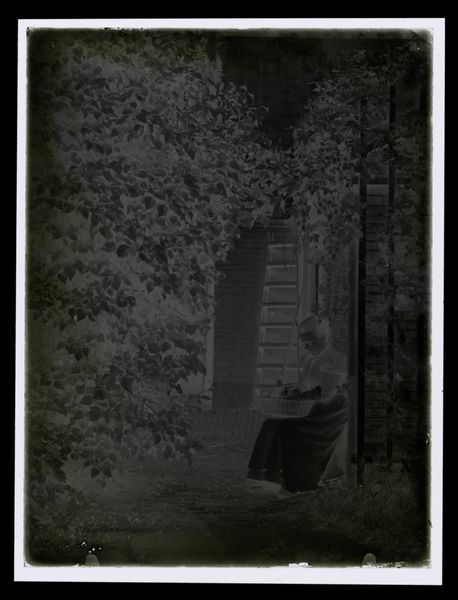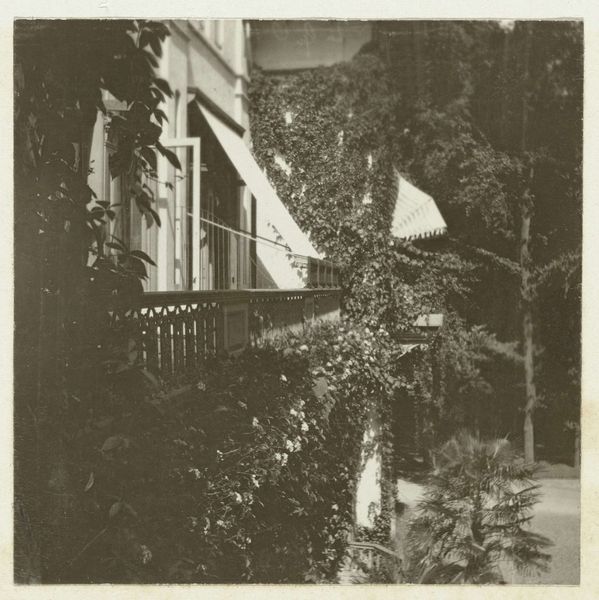
Dimensions: height 63 mm, width 88 mm
Copyright: Rijks Museum: Open Domain
Curator: Welcome to the Rijksmuseum. Here we have Adolphe Burdet’s gelatin silver print, “Bloemen achter een huis,” dating from between 1907 and 1930. Editor: Immediately, I see a potent symbolism within this image. The house is nearly overtaken by the blossoming garden, nature pushing its way forward... but within, visible through sheer curtains, we see a window to domesticity and the indoors, or possibly a symbolic reminder of shelter or interior thought. Curator: That’s a very perceptive reading! And it certainly ties into the cultural shift happening at the time. Urbanization was rapidly increasing, so the image almost acts as a meditation on the relationship between domestic space, burgeoning suburban gardens, and the surrounding rural world. Editor: Precisely! And even the photographic medium becomes symbolic here. Early photography often evoked notions of capturing and preserving reality. Perhaps the intent was to hold onto the rapidly disappearing natural world? Flowers act as common symbols, so do you find them pointing towards the fleeting beauty or an appreciation of life within a contained world? Curator: Perhaps. Consider the influence of the Impressionist movement too. Even in monochrome, Burdet’s softening of details feels like an attempt to capture a feeling or sensation of a garden scene, rather than a purely objective depiction. Think of what messages a turn-of-the-century Parisian salon viewer may take from the romanticized garden, framed through gelatin and silver? Editor: Indeed. It's fascinating how the choice of a garden – usually carefully planned and cultivated—also reflects ideas about human influence, co-existing or interfering with what's considered to be a "wilder" form of nature. Also how the composition feels closed-off. Curator: It certainly raises questions about our place in nature and its impact. How have cultural perspectives influenced depictions of this dynamic? It is also intriguing that the artwork is on display in the prestigious institution in The Netherlands, which raises considerations of value and power as an imprint of history. Editor: Very true. The interplay is a compelling snapshot of a specific cultural mindset towards a concept. Now I look closer and find more nuance with each viewing. Curator: Absolutely! Thank you for joining me in uncovering these additional layers. It adds another perspective on what appears at first glance to be a simple composition.
Comments
No comments
Be the first to comment and join the conversation on the ultimate creative platform.
